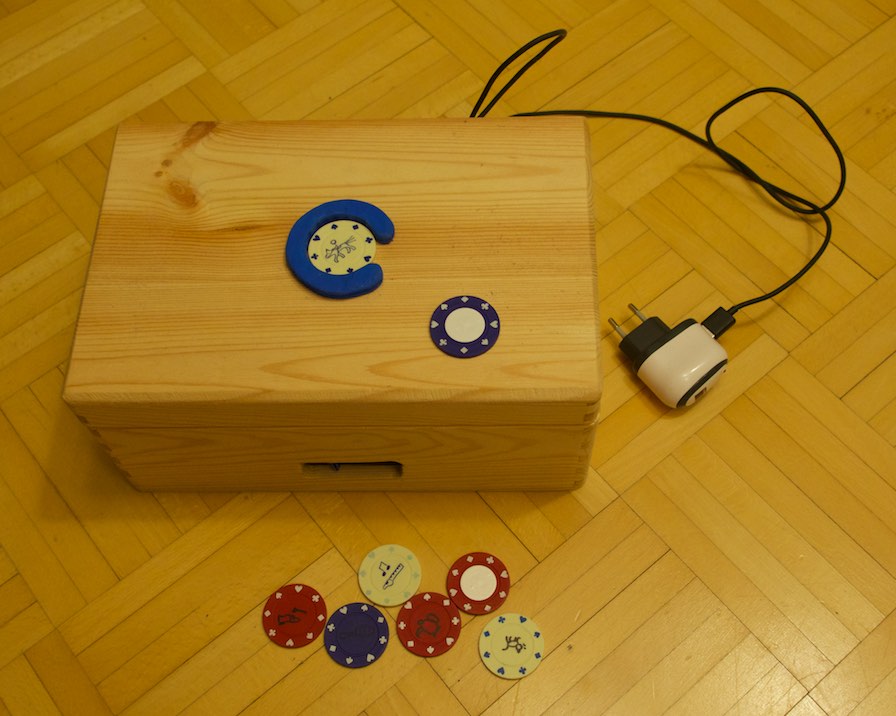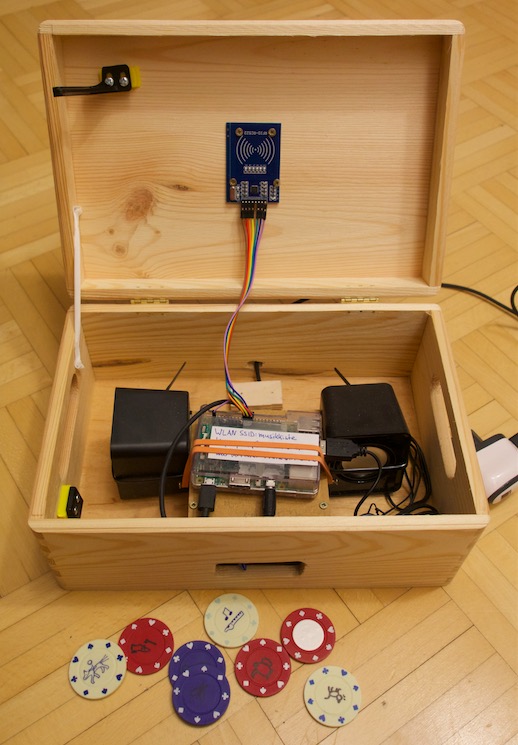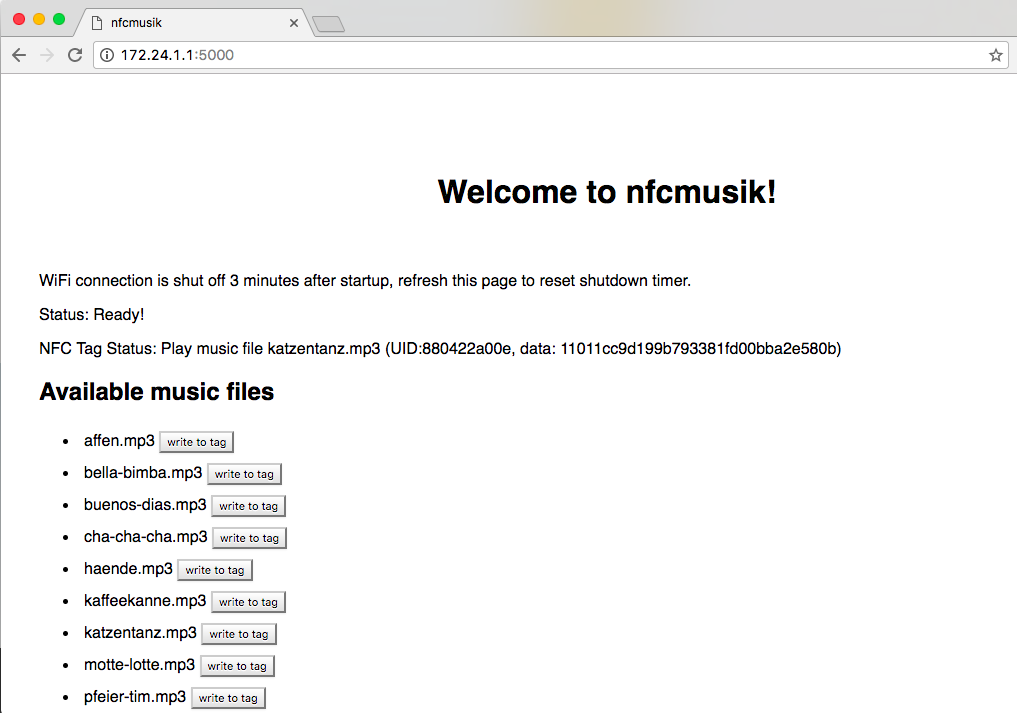nfcmusik
Goal: build a simple mp3 player that a toddler can use, based on a raspberry pi.
A song is started by placing an NFC token on a sensor. Removing the token stops the music. That's all the user interface there is.
In my setup, the RasPi is hidden in a wooden box, that also contains a pair of tiny USB speakers. The NFC sensor is screwed to the inside of the lid. As tokens I use plastic poker chips. Each token plays one specific song. On one side I stick an NFC tag, on the other I draw a little icon symbolizing the song to be played by this token.
The music box is configured via a web interface, in which you can assign a song to a specific NFC tag.
Shopping list
Here's what I bought to build the player (no, I'm in no way affiliated with Amazon...):
- Neuftech Mifare RC522 RFC Reader
- Trust Leto 2.0 USB Speakers
- 20 NFC Tags Sticker NTAG213 Circus round 22mm 168Byte
- Some USB power supply, plus a USB extension cable
- Aukru 40x 20cm female-female jumper wire to wire the RFC reader to the RasPi
- Raspberry Board Pi 3 Model B
- Some SD Card (16 GB)
- Some RasPi Case
- A wooden box, about the size of a shoe box, from a DIY store
RasPi Setup
WLAN access point
Configure the raspi to act as a WLAN access point on interface wlan0.
See, for example, this site for instructions.
Note the static IP that you assign to the RasPi while configuring. This will be the address where
you can access the user interface (also see below).
The wlan0 interface is automatically shut down 3 minutes after startup, to avoid unneccessary 'radiation' and
to reduce interference in the speakers. Refreshing the home page of the user interface resets
the shutdown timer. After the access point has shut down, you would need to re-boot the RasPi to
reconnect (or connect to it via LAN).
Base OS
The code was built and tested with Raspian Jessie (2016-05-27).
Enable the SPI interface using sudo raspi-config, then go to Advanced Options and enable SPI.
System packages
Install these via sudo apt-get install <package>, after doing sudo apt-get upgrade
- python-dev (required for building SPI driver)
Optional:
- vim
- ipython
Python packages
Install these with pip install <package>
- flask
SPI interface
Clone the SPI-Py project into a directory SPI-Py.
Code is not included in this repo because SPI-Py is GPL (and I want my project license to be less restrictive).
The project was built and tested with commit 3d537a7e40ae1a7035b147acf08a73c9e31027ea of SPI-Py.
Build the SPI interface driver as follows:
cd SPI-Py
python setup.py build
sudo python setup.py install
rm -rv build
Integrated third-party code for RFID interface
The RFID interface (RFID.py) is based on pi-rc522, commit
6f5add08df29940bac15d3e9d98763fcc212ecc7, with custom modifications.
NFC Tags
This project was built and tested with NXP NTAG213 tags. Contrary to the examples
and default usage in RFID.py, these do NOT require authentication
to be read or written. They also use 4-byte pages instead of 16-byte ones.
reads return 4 pages (16 bytes) at a time, but writes write 4 bytes only.
RFID.py can read 16 bytes fine, writes must happen with 16 bytes of data
of which only the first 4 are actually written.
ToDo: Fix RFID.py to correctly handle 4-byte writes..
NFC Reader
See the pi-rc522 page for instructions on how to connect the NFC reader to your RasPi. The RasPi pinout can be found here.
Administration
Copy mp3 files to the RasPi SD Card, adapt settings.py to point to the correct MUSIC_ROOT
containing the mp3 files.
Copying can be done via scp or by plugging the SD card into your PC/Mac.
Music files contained in MUSIC_ROOT will be shown in the user interface and will
be playable by NFC tags.
Clone this git repo into a directory of your choice on the RasPi. Run python controller.py to start.
See comment in controller.py for how to autostart on reboot.
Open http://<RasPi IP or host name>:5000 to access NFC tag management.
Place tag on reader, click 'write to tag' besides one of the listed music files
to assign the file to the tag.


